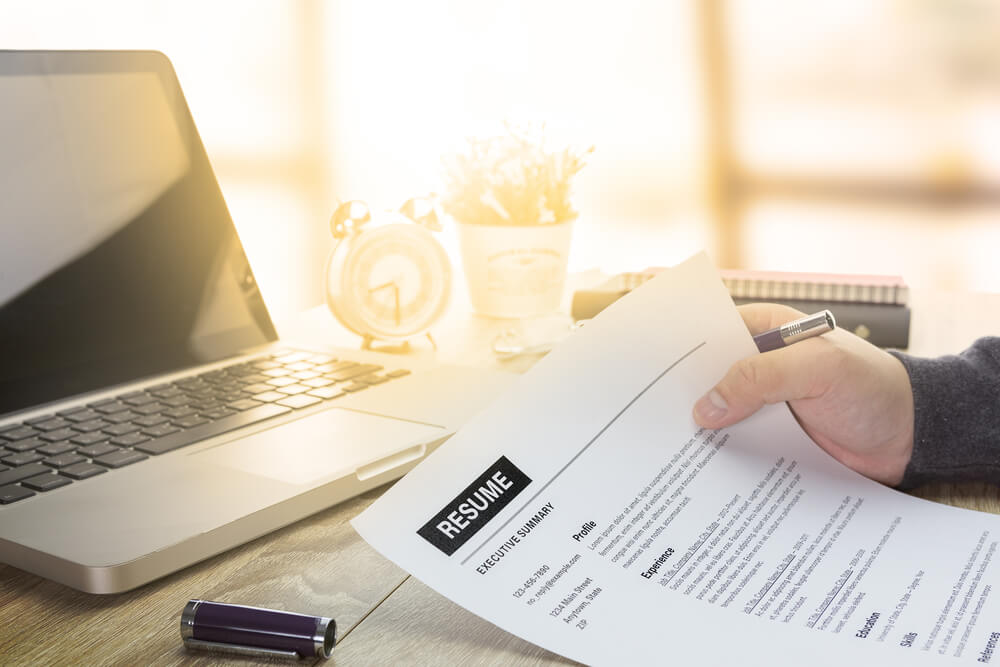
In the case of your resume, your audience of attorneys—your potential employers—is seeking an employee who will add value to the firm, fit into the firm's particular environment, and bring good judgment. You want to present a resume that relates to their needs and can be read effortlessly. Keep asking yourself, "What are they seeking in my resume?" and "How will they receive what I'm writing?" Your resume should convey quality, attention to detail, and "getting it right." A resume that frustrates, annoys, or confuses readers—or even makes them laugh—is a risk. And when you are seeking employment with a firm that you know would be perfect for your goals and talents, you probably want to become fairly risk-averse.
Setting aside what you actually say in your resume, good design implies a good product. Readers may not be able to articulate why they were attracted at first glance to your resume, but they are more likely to pull it off the stack and give it a read if it looks good. If you follow these basic suggestions from Attorney Resume, you will be able to create a simple, attractive, readable resume that by its quality reflects yours.
1. Basic contact information is on the heading at the top. (Use this same information as an identical heading for your cover letter.) Your name should be in the largest font on the page (16-18 pt., or even 20 pt., depending on the font style) so that it is easier to locate your resume and remember. Decide which of your telephone numbers you want to use, and keep in mind that it is standard practice to include your email address.
2. Margins are the frames of your resume text; and as with the frame of a picture, they should be neither too small nor too large. If the margins are too narrow, the resume feels claustrophobic, with no room to "breathe"; if you make your margins too wide, you might be accused of padding your resume. Attorney Resume writers like the margins to be .7 in. or .8 in., given the standard size of the page and amount of text.
3. Font styles that are over-the-top are inappropriate for formal resume use. Attorney Resume writers normally use the old standard, Times New Roman, as well as Garamond and Book Antigua.
4. Font sizes really depend on the style of the type: 11-point is the size that Attorney Resume uses for the text, but some fonts read better at a smaller size. You simply have to judge whether it will be easy to read by that over-40 attorney beginning to lose his/her reading acuity (sad but true) or if it resembles the tiny print ophthalmologists use to test the limits of your vision. Also be aware that if you use a too-large font size, your text might resemble a first-grade reader, with all its implications.
5. Formatting is excellent for organizing the different parts of a resume. For example, your name is the largest size; the headings Profile, Education, and Experience are in a slightly smaller type; and names of individual schools and employers are in a still smaller type. All of these headings could be in bold too. In this way, readers will not become frustrated trying to figure out what your resume offers. Rather, they are led step-by-step through the resume. There are caveats: Words in all capital letters are too jarring, much as with emails, where capital letters signify shouting. Moreover, underlining words cuts through the descenders—the tails on letters g, p, and q—making the text difficult to read.
See 6 Things Attorneys and Law Students Need to Remove from Their Resumes ASAP If They Want to Get Jobs with the Most Prestigious Law Firms for more information.
6. Eliminate widows. No, not the human kind! A widow is the single, final word of a sentence that appears all by itself on a line. It floats in space, weirdly, taking up an entire precious line. You can eliminate a widow by adjusting the space between words, within a couple of lines, anywhere from 0.1 pt. to 0.3 pt., but no more. If this doesn't work, you may have to re-phrase the sentence to eradicate the widow.
7. Proof and proof again. As Joe E. Lewis said to cross-dressing Jack Lemmon (a.k.a. Daphne) at the end of Some Like It Hot, "Nobody's perfect!" Always use the spelling and grammar check, but that isn't enough. (Nothing's perfect, either.) Always read over your resume word by word, so that you will locate any words that exist but are contextually incorrect, e.g., form/from and two/to/two. Through careful proofing, you can catch omitted words, as well. Use the Find function to find any word that you have repeated in succeeding lines, and then choose another word as a substitute, e.g., counseled for advised. Check for incorrect punctuation and extra (or missing) spaces. And when you are finished, ask a super-literate friend to proof it again.
If you take these tips to heart, you will have a quality resume that is attractive, inviting, and easy to read.
Read More About Legal Resumes
- Devloping the skills of wrting a perfect Law firm Resume
- The Dos and Don'ts of Cover Letter Writing
- Essential Resume Profiles
- Tips on how to write a great cover letter and a Resume
- Broadening Your Resume When Job Experience is Scarce
- How to choose writing samples for an interview
- Your Attorney Resume: Use a Statement of Qualifications and a Cover Letter Instead of an Objective
- Covering letter is considered to be an important asset while applying for a Paralegal Job
- How to Write a Legal Resume: Tips on Writing a Legal Resume to Get an Attorney Job
- Legal Research Writing
Interested in More Interview Advice?
See Our Most Popular Interview Articles:
- The Five Musts of Interviewing
- The Best Way to Prepare for a Job Search and Interviews
- How to Talk About Other Interviews in Your Interviews
- Employers Want to Hire You
- How To Answer The Tell Me About Yourself Interview Questions
Interested in Learning More About Attorney Resumes? See more articles from BCG Attorney Search here:
- Legal Resume Writing
- How to Write a Legal Resume
- What Should I Put on My Legal Resume
- Should I Submit My Resume through a Friend in the Law Firm?
- How Out Should I be on my Resume
- What is the Best Way to Get My Resume and Cover Letter Noticed
Get Your Resume Professionally Done by Attorney Resume
Really Interested in This Topic? Read the book Attorney Resume Secrets Revealed
Please see the following articles for more information about resumes:
- How to Write a Legal Resume: Tips on Writing a Legal Resume to Get an Attorney Job
- What Law Firms Look for In a Lateral Resume
- 12 Resume Mistakes that Might Cost You an Attorney Job
- Your Attorney Resume: Use a Statement of Qualifications and a Cover Letter Instead of an Objective
- How to Write a Legal Resume
- Developing the Skills of Writing a Perfect Law Firm Resume
- Sending a Transaction Sheet with Your Attorney Resume
- Eight Simple Rules to Keep Your Resume and Cover Letter Out of the Trash
- Top 5 Tips for Creating Your Attorney Resume
- Creating an Exceptional Paralegal Resume



